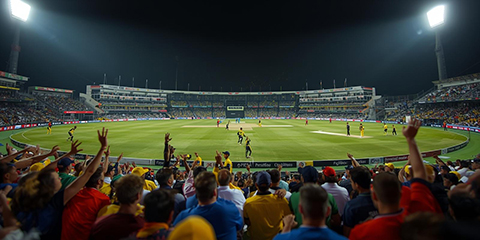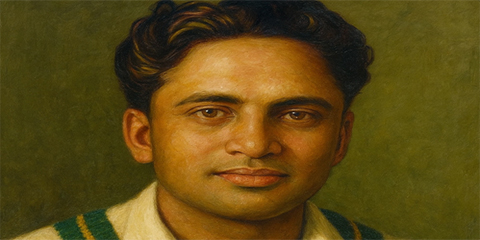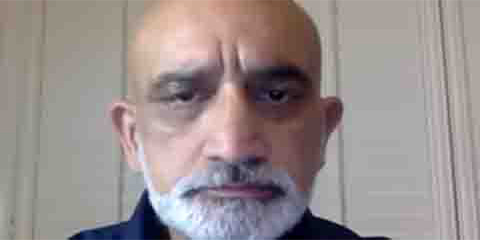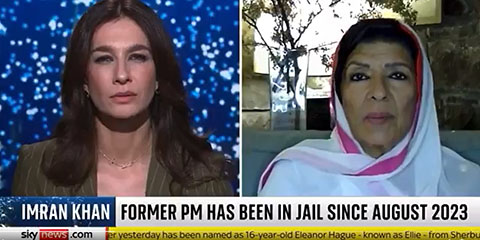The forgotten bridge: Amir Elahi's journey from tricolor to green
JournalismPakistan.com | Published 4 months ago | Dr. Nauman Niaz (TI)
Join our WhatsApp channel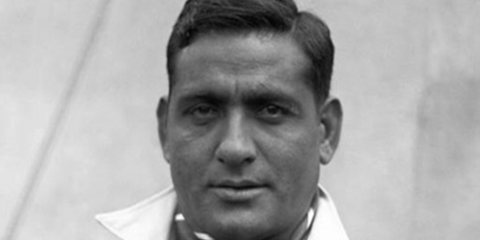
ISLAMABAD—Only a handful of men have stood at the cricketing crease wearing both India and Pakistan colours, not as betrayers, but as products of a rupture that reshaped the subcontinent's soul. Their names caress the wind, forgotten in the thunder of modern rivalries.
Among them, Amir Elahi's story is neither loud nor flamboyant, yet it echoes with poignancy, with the ache of displacement, and the stoic poise of a cricketer who belonged to two homes and, perhaps, truly to neither.
Born in a time much before independence and separation of the hearts, Elahi played in a world where one could represent India without a passport, only a promise. In 1947, as history staggered under the weight of Partition, he made his Test debut for India against Australia — a solitary appearance under the tricolour, before the tides of independence swept him across to the new nation, Pakistan.
A Late Bloom in Cricket's Garden
At 44, an age when most cricketers hang up their boots and dreams, Elahi played his final Test — not for India, but against her. It was in 1952-53, during Pakistan's first full tour of their estranged sibling. He wore green then, not white, and took 13 wickets across the series, averaging 38.76 — numbers that may not dazzle the modern eye, but carry the silent burden of a man representing a nation still darning together its identity, on pitches heavy with politics and pathos.
Before all this — before Partition fractured the playing fields of undivided India — Elahi had toured England in 1936, returning with 17 wickets and stories etched in sepia with making debut in official Tests. In Australia, in 1947-48, as the ashes of Empire settled and India stepped blinking into Test status, he laboured for 8 wickets at a punishing average.
The Secunderabad Symphony*
In the sepia shimmer of Secunderabad's Gymkhana Ground, Amir Elahi didn't just debut—he arrived like a quiet verse in cricket's evolving poem. It was 1934, and the Moin-ud-Dowlah Gold Cup semi-final between the Crescent Club of Lahore and the Freelooters unfolded with the casual grandeur of a princely court.
Elahi, young and untested, walked into a match thick with pedigree, Learie Constantine thundered, Baqa Jilani schemed—but it was the boy from Lahore who left footprints in the dust. A stubborn 35 with the bat at No. 8 amidst the wreckage, then three wickets—ME Sheikh, LP Jai, & MA Gopaldas—with the ball, each one a quiet declaration that he belonged.
The Art of Spinning Time
Amir Elahi did not bowl overs; he composed them—each one a sentence, each spell a paragraph, and his career a meandering, magnificent novel stitched in wrist-work and memory. He was not a product of his time, but a defiance of it—a spinner who waited years, crossed borders, changed flags, and still turned the ball as if it answered only to him.
It began at Lawrence Gardens, under Lahore's old trees, where the shadows knew elegance and Elahi staked his first claim with stumps and spells. By the mid-1930s, he had blossomed—42 wickets in 1935–36, the Bombay Quadrangular bowing to his will, and Australians unravelled at his feet at Gymkhana.
The 1947 Sydney Debut: A Twilight Beginning
The year was 1947—nations had been born in fire, maps redrawn by trembling hands, but cricket still carried on, quietly and stubbornly, like an old habit. And into this new world, stitched with partitions and freshly sewn flags, arrived a 44-year-old debutant, his beard speckled with time, his fingers wrapped around memory: Amir Elahi.
Sydney greeted him not with fanfare, but with drizzle. The skies wept intermittently, as if mourning all that had been lost to history. But Elahi—stoic, unbothered, eternal—made his way to the middle, a relic from the time of pre-war tours and leather flannels, now dressed in the blinding white of independent India.
The Great Schism and Cricket's Refugees
Then came August 1947, that blood-soaked rupture. One day, the land was India. Next, it was two nations, staring at each other across an invisible wound. Two hundred thousand, or two million, depending on whose silence you believe, perished in the madness. Trains brought bodies instead of passengers. Cities like Lahore, once teeming with Hindus, Sikhs, and Muslims alike, found their mosaics shattered.
Cricket, too, was displaced. Careers drowned in blood. And yet—cricket endured.
Crossing the Border: From Tricolor to Crescent
At the age of 42, Elahi left for Pakistan, leaving behind his Ranji dreams and the country he had once represented. He became one of the fifteen men in cricket's long and cluttered history to play Test matches for two nations. A rare distinction, forged in the fire of partition.
When Pakistan embarked on its first-ever tour of India in 1952–53, Elahi was there. At 44, most men dream of armchairs and newspapers. Elahi dreamt of wickets. In Calcutta, in what would be his final Test, he spun the ball not just with fingers but with memory.
The Final Stand: Poetry in Numbers
In Chennai, with Pakistan floundering, he joined Zulfiqar Ahmed at the crease. The last wicket stand of 104 came in a blur—Elahi scored 47 of those in just 85 minutes. The spinner, reborn as a swashbuckling batsman. It was a stand that danced defiantly against history.
And then, silence. He never played another Test. He faded away, as such men often do. Into the club games, into the city leagues, into conversations that begin with 'Remember Amir Elahi?'
The Karachi Winter: A Quiet Exit
On December 28, 1980, in the brittle winter of Karachi, a man slipped quietly from the world. There were no headlines screaming his name, no packed stadiums pausing for a minute's silence. Only the city's sea breeze — indifferent and eternal — bore faint witness as Amir Elahi exhaled his final breath, aged 72 years and 118 days.
His death did not shatter front pages, but it marked the quiet extinction of an era. A man who had bowled under three flags — the Union Jack, the tricolour, and the crescent — took his leave.
The Legacy of the Margins
Elahi was never a central figure in cricket's golden portraits. He lived on the margins — geographically, stylistically, historically. But it is in the margins that the truest stories often live.
His Test appearances were few, but his legacy is not in numbers. It is in what he represented — a generation of players whose careers were cleaved by cartography, who had to choose sides in a game they thought was one.
When Amir Elahi died, we lost not just a player, but a living archive. We lost cricket before it was a televised empire, before the IPL and PCB, before rivalries were broadcast in HD. We lost the memory of princely states fielding teams, of selectors choosing cricketers based on community, not class, of a game still learning how to belong to the masses.
Now, in the folds of dusty scorecards and the whispers of those who still remember, he spins again. Slowly. Quietly. Eternally.
Dr. Nauman Niaz is a civil award winner (Tamagha-i-Imtiaz) in Sports Broadcasting & Journalism, and is the sports editor at JournalismPakistan.com. He is a regular cricket correspondent, having covered 54 tours and three ICC World Cups, and having written over 3500 articles. He has authored 15 books and is the official historian of Pakistan Cricket (Fluctuating Fortunes IV Volumes - 2005). His signature show Game On Hai has been the highest on ratings and acclaim.








